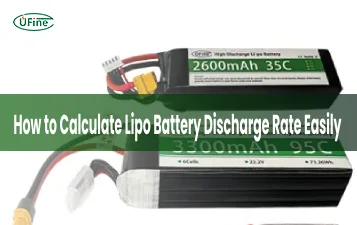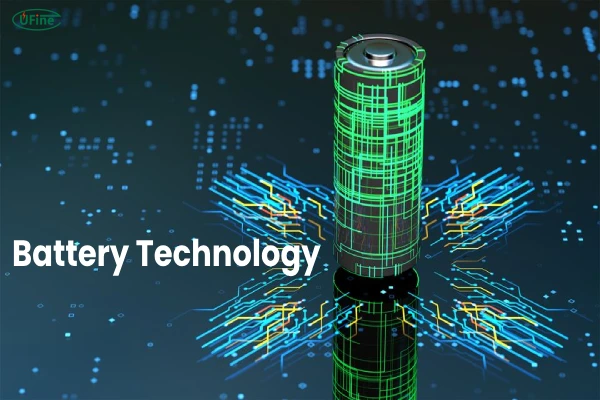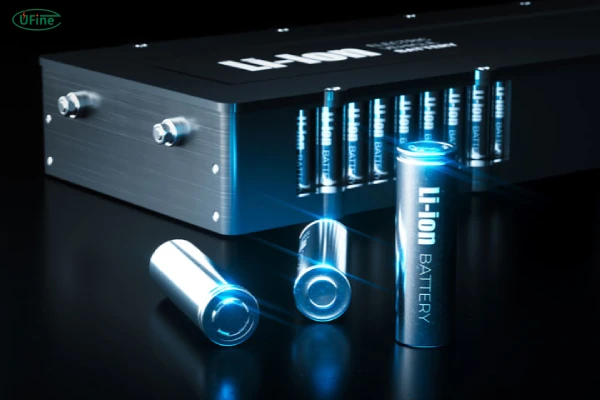We live in an era of technological miracles. Computers double in power every few years. Internet speeds skyrocket. Yet, when it comes to batteries, progress feels agonizingly slow. Your smartphone still needs daily charging. Electric cars still take hours to refuel. Why?
The truth is, battery technology is one of the hardest engineering challenges of our time. Unlike software, which evolves exponentially, batteries are shackled by the laws of physics and chemistry. Every improvement requires painstaking research, costly experimentation, and delicate trade-offs.
But that doesn’t mean we’re stuck. Over the past decade, incremental advances have quietly pushed lithium-ion batteries closer to their theoretical limits—while new technologies loom on the horizon.
Let’s explore why battery innovation feels so slow, what’s changed over the last decade, and what the future might hold.
Part 1. Why is it do difficult to improve battery technology?
Here’s the hard truth: battery technology is incredibly complex. And improving it? Even harder.
To the average person, it might seem simple—just make batteries last longer and charge faster. But in reality, it’s a fragile dance between chemistry, physics, safety, and cost.
First, there are physical limitations. A battery stores energy using chemical reactions. In most cases, we’re talking about lithium ions moving between electrodes. But there’s only so much lithium, only so many safe materials to hold it, and only so many ways to speed it up without causing danger.
Then come the trade-offs. Want more energy (higher energy density)? That often means sacrificing safety. Want it to last longer (cycle life)? That could mean slower charging. Engineers and researchers constantly wrestle with decisions that feel like choosing the lesser evil.
What is the Energy Density of a Lithium-Ion Battery?
And let’s not forget safety concerns. As we push lithium battery technology to its limits, the risk of overheating, fires, or explosions becomes very real. Remember the smartphone recalls and electric vehicle fires? These are stark reminders that progress can be dangerous if rushed.
Lastly, there’s cost. High-performance batteries often use rare materials, require expensive manufacturing processes, and need complex battery management systems. Even if the science is solved, making it affordable and scalable is another mountain to climb.
So yes—battery technology is hard. Not because we lack ideas, but because reality puts up roadblocks at every turn.
Part 2. What has actually changed in battery technology over the past 10 years?
Despite the frustration, the past decade has seen meaningful progress in battery technology—even if it hasn’t always been flashy.
Here’s what’s changed:
- Energy density has steadily improved. Ten years ago, a typical lithium-ion battery offered around 150 Wh/kg. Today, some commercial cells reach 250–300 Wh/kg. That means more power packed into the same size.
- Charging times have dropped. Thanks to smarter battery management systems and better materials, some EV batteries now charge to 80% in under 20 minutes.
- Costs have plummeted. The average cost per kilowatt-hour has fallen from over $1,000 in 2010 to around $130 in 2024. This is what made electric vehicles and home battery systems more affordable.
- Battery lifespans have increased. Some lithium iron phosphate (LFP) batteries now last over 3,000 full charge cycles, which could mean more than a decade of use.
- Manufacturing has scaled massively. Gigafactories now produce batteries at rates unthinkable ten years ago, helping to meet growing global demand.
And while these changes may seem incremental, together they represent a massive leap forward in real-world usability.
Part 3. Is it harder to improve battery life or power density?
This is one of the most debated questions in battery R&D circles. Both are tough. But in many ways, improving battery life is the harder battle.
Here’s why:
Battery life is limited by chemical degradation. Every time a battery charges and discharges, tiny side reactions occur. Electrode materials swell and shrink. Lithium gets trapped in unwanted places. Over time, the battery simply wears out.
Power density, on the other hand, is about how fast energy can be delivered. It’s an engineering challenge, yes—but one that can often be addressed with smarter cooling systems, improved current collectors, or refined materials.
Improving lifespan requires long-term stability under all kinds of conditions—heat, cold, partial charging, high currents. That’s a slower, more delicate challenge. It’s one reason EV makers still recommend not charging to 100% too often. The chemistry just isn’t forgiving yet.
Part 4. Has battery technology stagnated?
At first glance, it might feel like we’re stuck. The same lithium-ion batteries are everywhere. We’re still waiting for “game-changing” breakthroughs. So… has battery technology hit a wall?
Not quite.
What we’re seeing is the maturation of lithium battery technology. The wild early days of rapid jumps are over. Now we’re in the refinement stage—pushing existing chemistries to their peak while laying the groundwork for what comes next.
Think of it like climbing a mountain. The early climb had steep, exciting gains. But now we’re near the summit. Every extra meter is hard-earned.
At the same time, research has shifted focus. Labs around the world are exploring lithium-sulfur, solid-state, and sodium-ion batteries. These aren’t ready for mass adoption yet—but they’re coming.
So no, battery technology hasn’t stagnated. It’s just getting more disciplined.
Part 5. How will lithium battery technology evolve?
While we’re waiting for the “next big thing,” lithium battery technology isn’t standing still. In fact, some of the most exciting changes are happening within lithium systems themselves.
- Solid-State Batteries: These replace the flammable liquid electrolyte with a solid one. They offer higher energy density, longer life, and better safety. Toyota and QuantumScape are racing to bring these to market.
- Silicon Anodes: Traditional graphite anodes are reaching their limit. Silicon can store up to 10x more lithium—but it swells during charging. Companies like Sila Nanotechnologies are developing ways to stabilize it.
- Cobalt-Free Batteries: Cobalt is expensive and ethically problematic. New chemistries like LFP (lithium iron phosphate) avoid cobalt entirely, offering a safer and cheaper alternative.
- Recycling Improvements: The rise of battery recycling is helping recover valuable materials like lithium and nickel, reducing the need for mining and lowering costs.
The next 5–10 years will likely bring smarter, cleaner, and longer-lasting lithium batteries—before newer technologies take over.
Part 6. What are the most promising battery technologies of the future?
Let’s dream a little. If lithium-ion isn’t the endgame, what comes next?
- Lithium-Sulfur: These batteries could offer 2–3x the energy of current lithium-ion batteries. They’re lighter and cheaper but still struggle with durability.
- Solid-State: As mentioned, these may become the gold standard for safety and density. Still, mass production remains a hurdle.
- Sodium-Ion: Sodium is abundant and cheap. These batteries have lower energy density than lithium but could be perfect for grid storage.
- Metal-Air Batteries: Zinc-air and lithium-air batteries theoretically offer incredible energy density. But they face major technical hurdles like low recharge efficiency.
- Flow Batteries: These store energy in external tanks. Great for long-duration grid storage, though too bulky for mobile use.
Each of these has promise—but the winner will be the one that balances performance, safety, cost, and scalability. That’s no easy task.
Part 7. Final thoughts
Battery technology is at a turning point. Lithium battery technology has carried us for decades—and it’s still evolving. But the road ahead is full of both exciting opportunities and brutal realities.
There are no magic bullets. Just science, persistence, and progress—one charge cycle at a time.
Part 8. FAQs
Why does battery innovation feel so slow?
A: Because real breakthroughs take time. Battery tech must be tested across thousands of cycles, under every possible condition. Safety can’t be rushed.
Will solid-state batteries replace lithium-ion?
Eventually—maybe. But mass production is still years away. Expect high-end devices or EVs to get them first.
Is lithium running out?
Not yet. But demand is rising fast. That’s why alternative materials and recycling are becoming so important.
Are EV batteries different from phone batteries?
Yes. EV batteries are larger, more durable, and often use different chemistries for better lifespan and safety.
Can better batteries solve climate change?
They can help—especially in storing solar and wind energy. But we’ll also need cleaner grids, efficient transportation, and smart energy use.
Related Tags:
More Articles

LiPo Battery Discharge Rate Guide & Calculation Tips
Understand LiPo battery discharge rates, C-ratings, and how to calculate max current. Essential guide for RC, drones, and electronics users.
High‑Capacity 3S LiPo Batteries: 5000 mAh vs. 10000 mAh
Compare 3S LiPo 5000mAh vs 10000mAh batteries by weight, power, and use. Find the best fit for your drone, RC car, or boat setup.
Top 5 Applications for Small 3S LiPo Batteries
Small 3S LiPo batteries power drones, RC gear, wearables, and robotics with high energy and low weight. Making them ideal for compact electronics projects.
Building and Charging Your Own 3S LiPo Pack: A Step‑by‑Step Guide
Learn how to build, balance, and charge a 3S LiPo battery pack safely at home with this complete DIY guide for hobbyists and beginners.
How to Choose the Right LiPo Battery Plug Type?
Discover the best LiPo battery plug types, how to choose them, and expert tips for safe usage, soldering, and maintenance.





